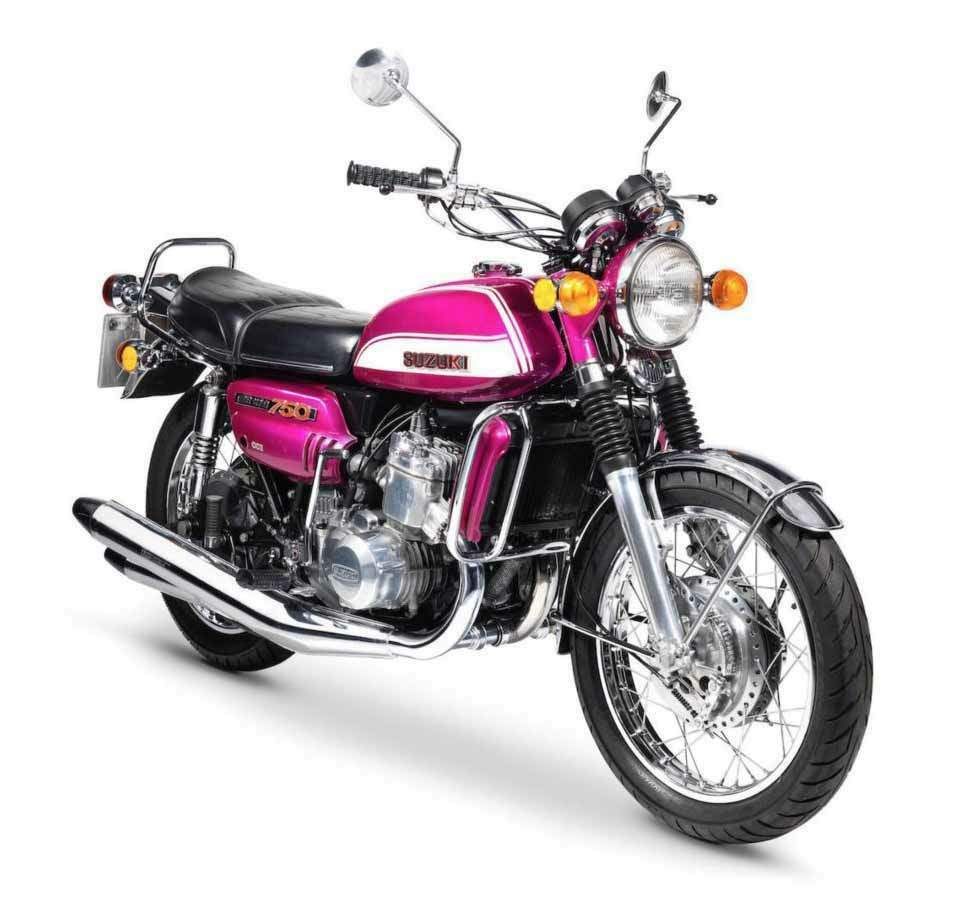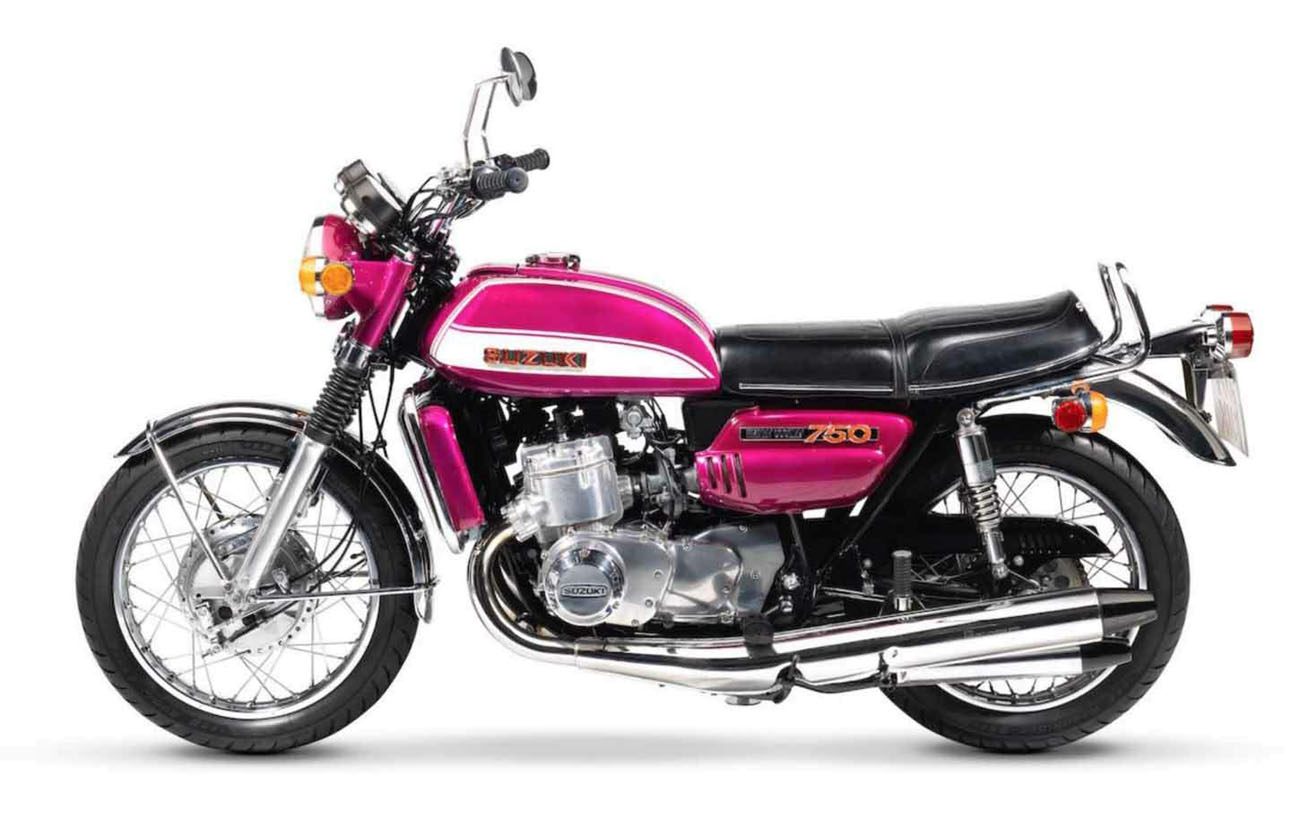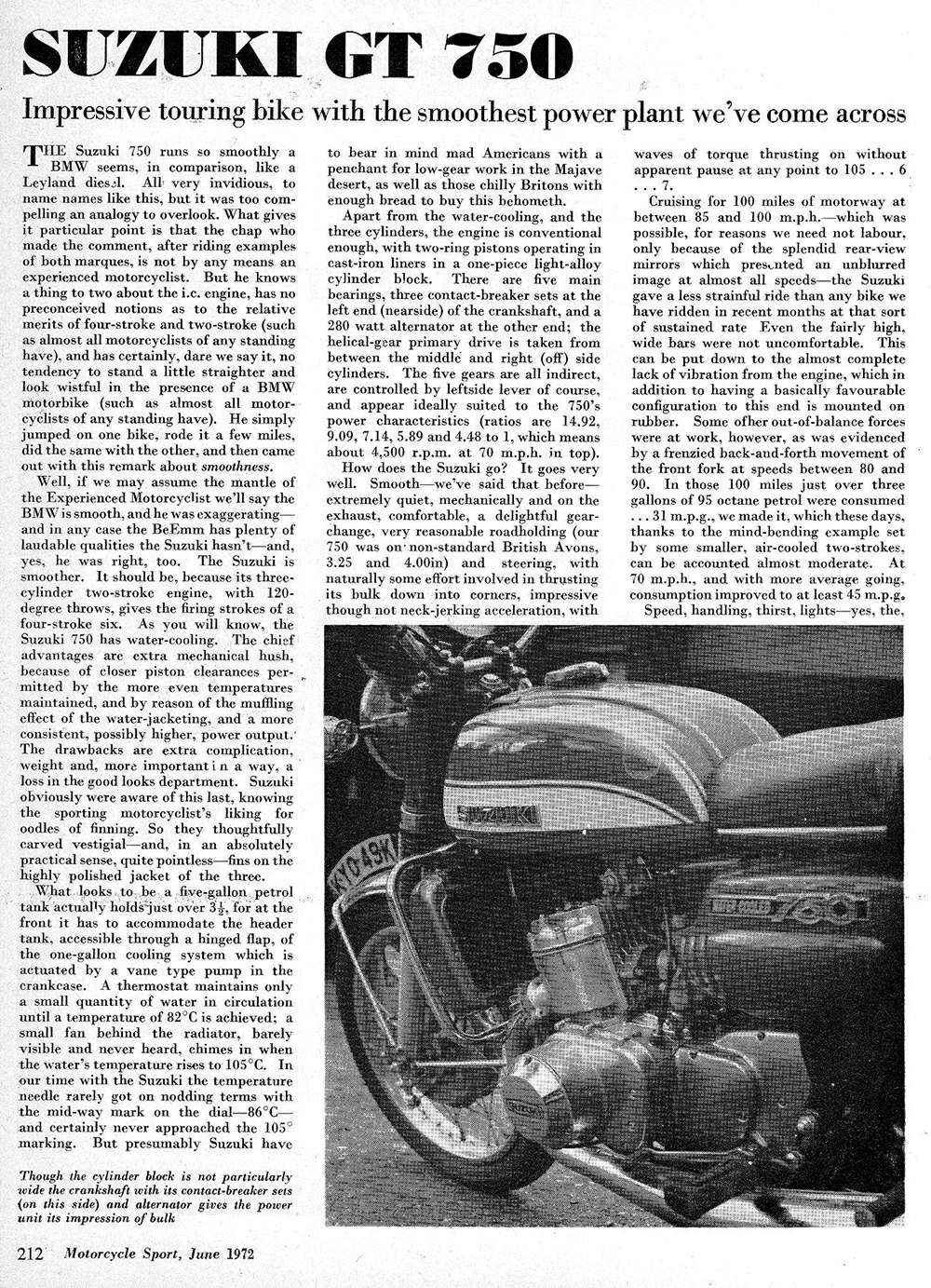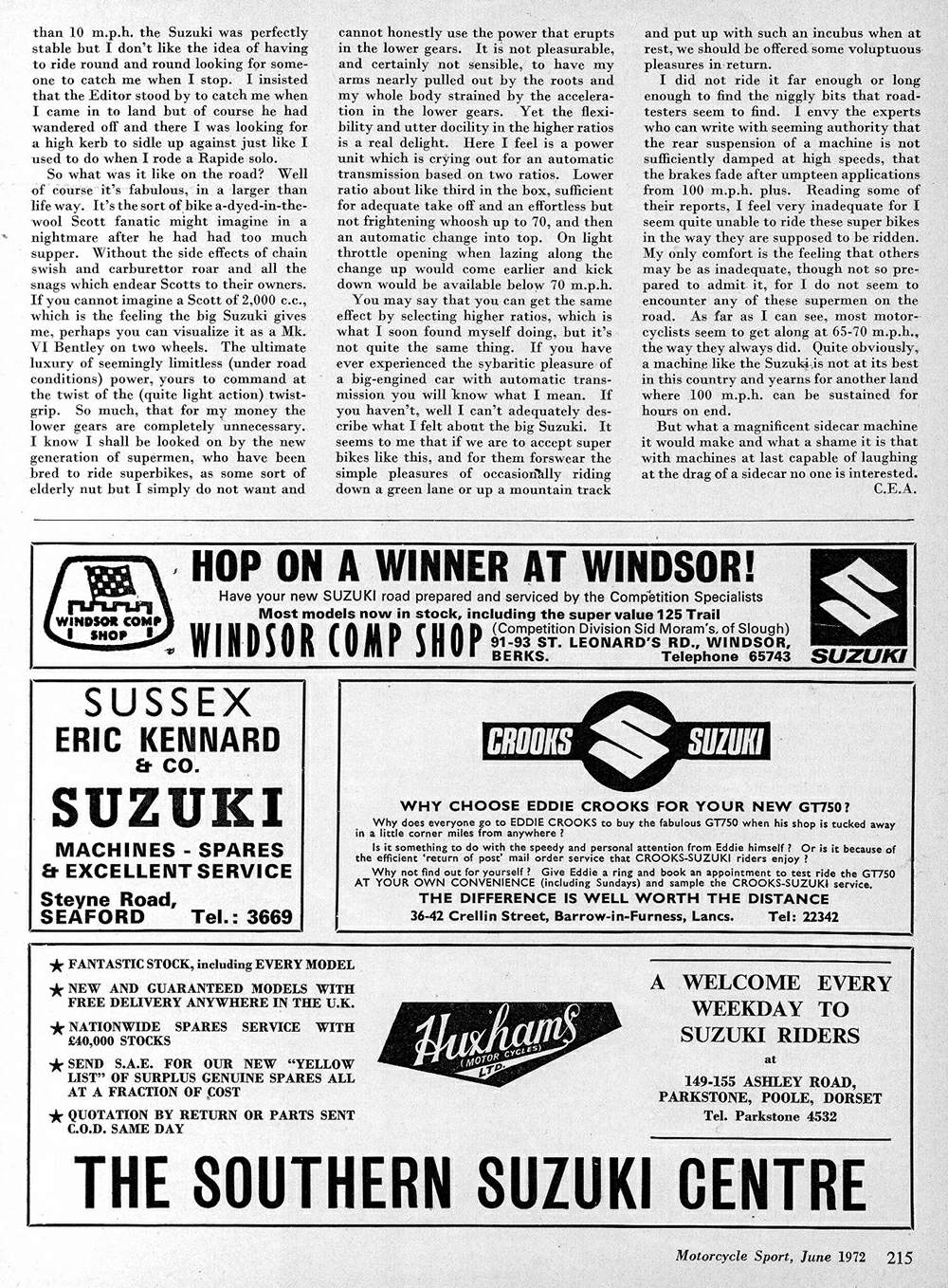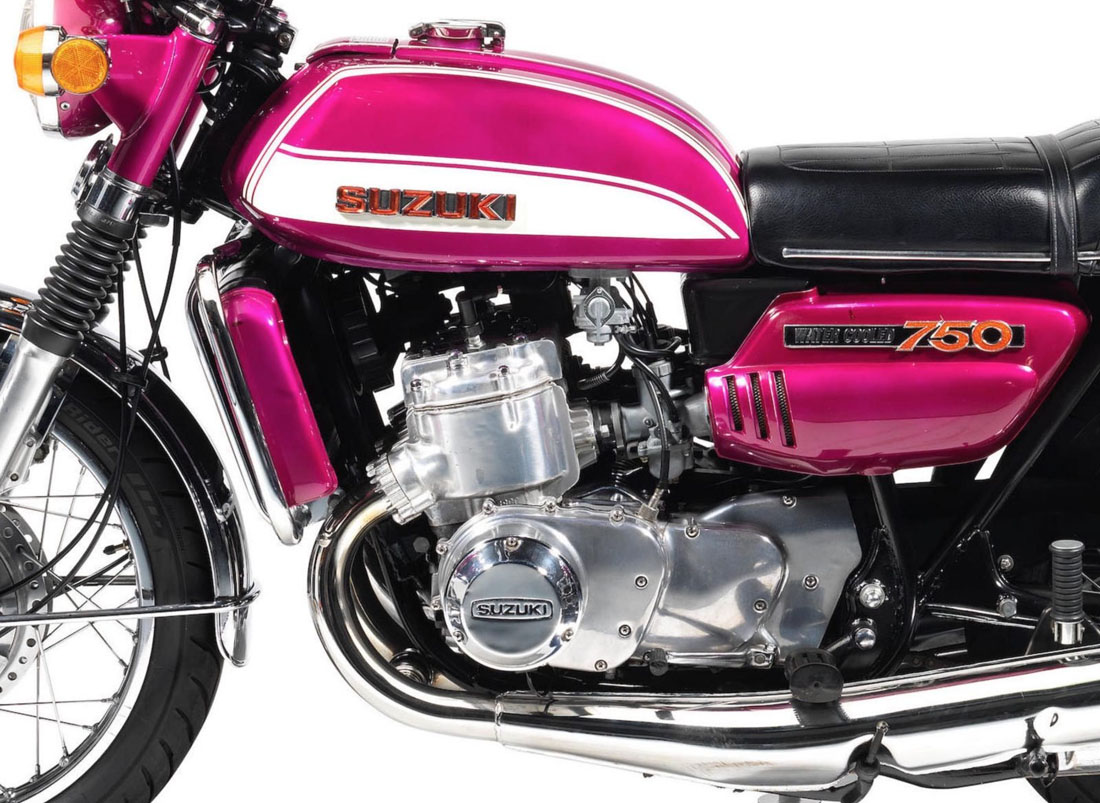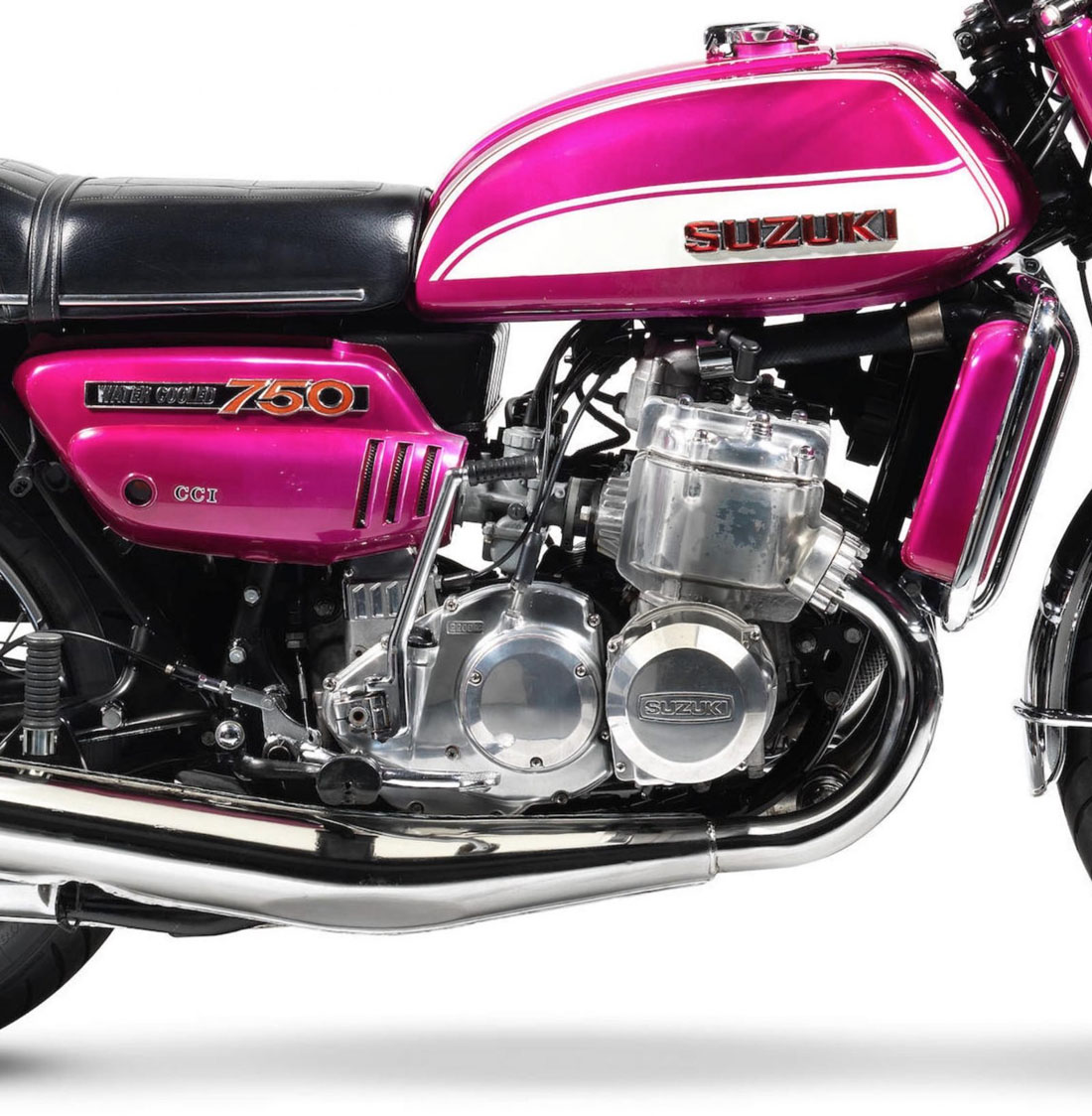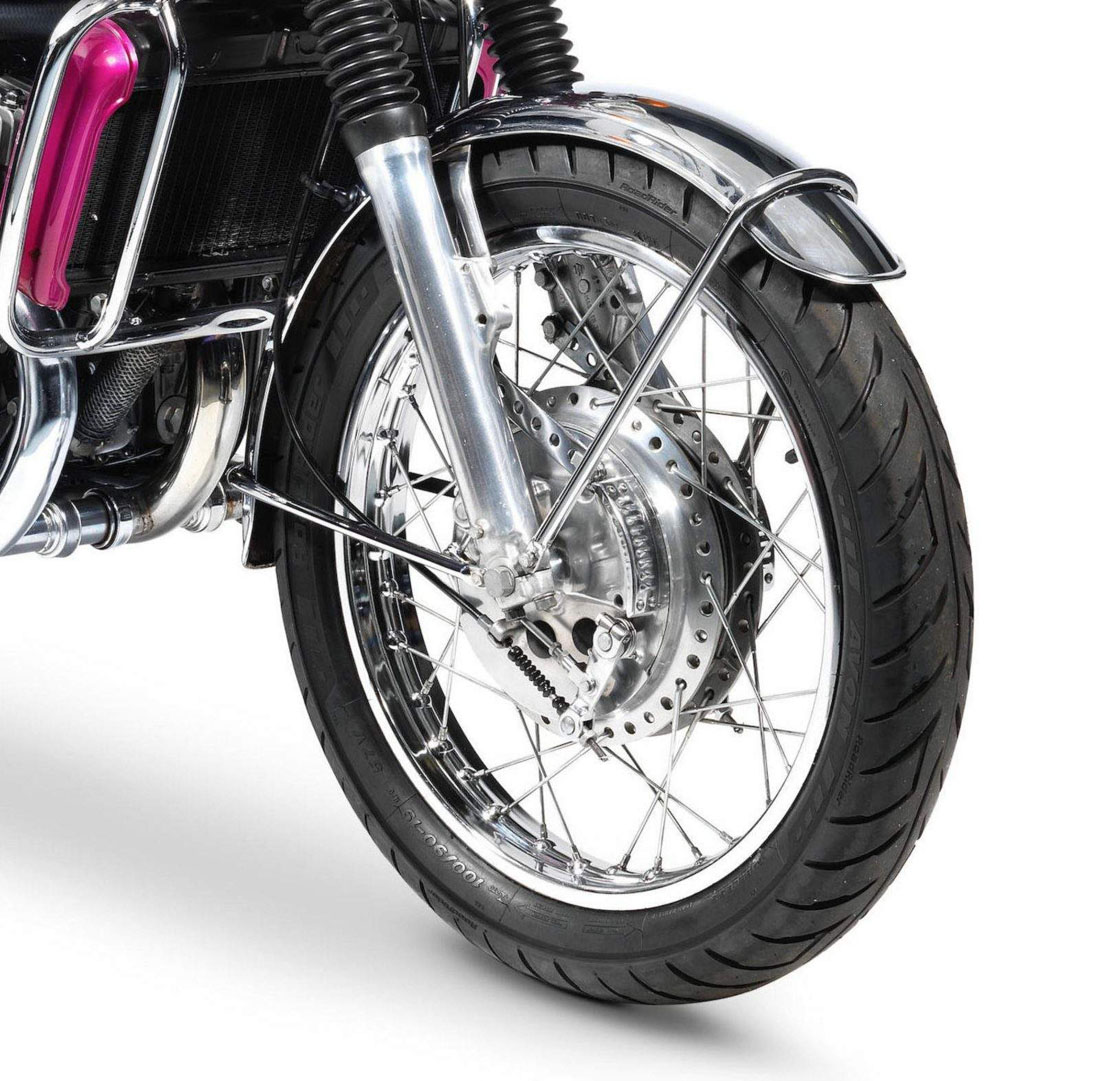Suzuki broke a lot of new ground with the GT750 over its 1971 to
1977 production run, it was the first Japanese production bike with twin-front
disc brakes (the 1973 model onwards), and it was the first Japanese motorcycle
with a liquid-cooled engine.
The 1970s were a time of significant experimentation with motorcycle engines,
manufacturers were building 4-strokes, 2-strokes, and Wankel rotaries. It wasn’t
clear at the time which engine technology would win out and become the de facto
– as each had its merits and drawbacks.
Suzuki developed the GT750, known as the Le Mans in the USA and Canada, by adding a cylinder to the parallel twin two-stroke Suzuki T500, and water-cooling the resulting inline-3 cylinder engine.
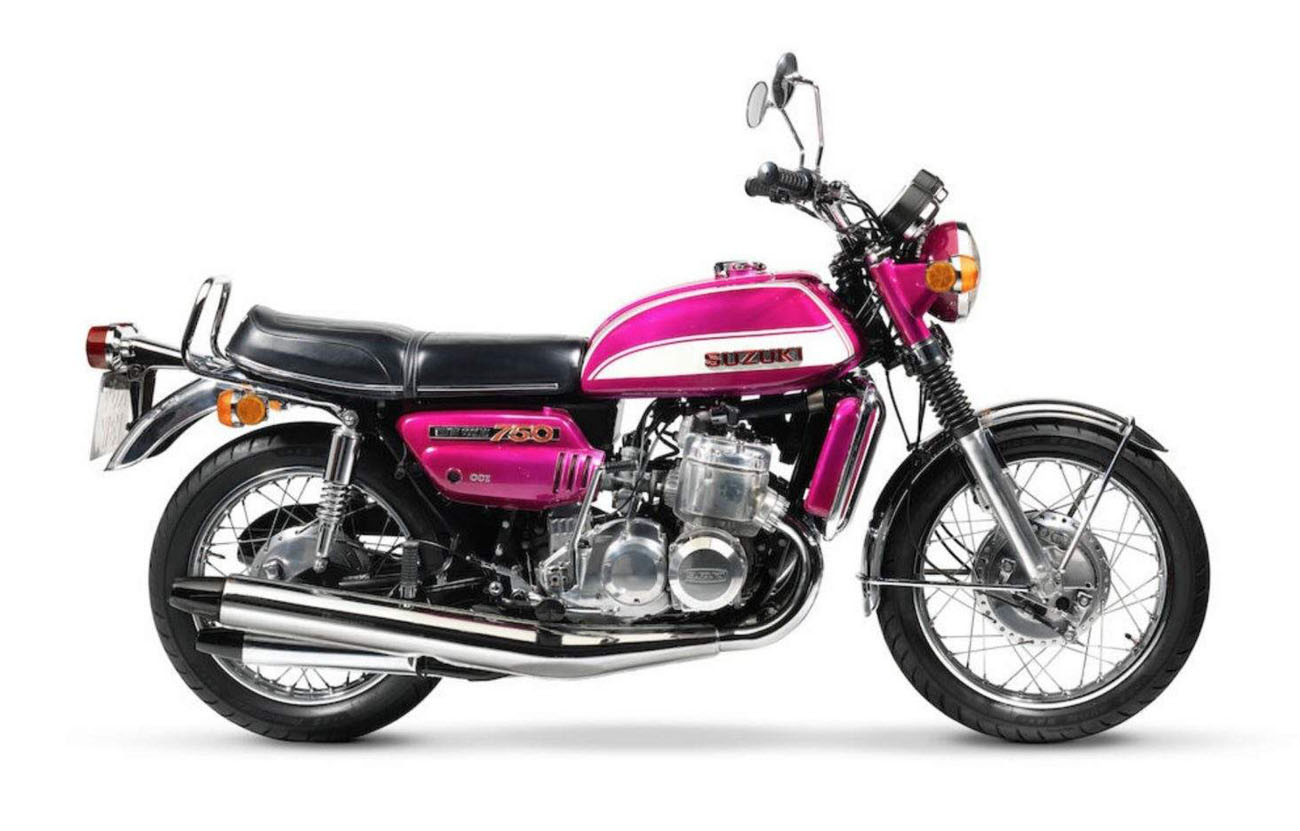
The distinctive lack of heat fins on the engine gave rise to a
number of unusual nicknames for the GT750 in different parts of the world. In
Australia they called it the “Water Bottle”, in Britain they called it the
“Kettle“, and in the USA they called it the “Water Buffalo” – because it was
full of water and weighed more than most production motorcycles of the time.
Period motorcycle reviews of the Suzuki GT750 Le Mans were a mixed bag, some
loved it and preferred it to the CB750, and some weren’t particularly fond of
it, or its habit of blowing blue smoke.
At full chat the engine is capable of 70 hp (at 6500 rpm) and anywhere from 30 to 40 miles per gallon. The kerb weight was a rather hefty-for-the-time 482 lbs, though much of the additional weight was due to the water jacket, the liquid itself, and the radiator.

